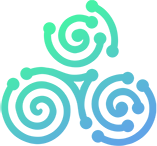Speaker blog: Ian Keaveny
Glitch art is everywhere , but maybe you don’t know it , adverts from Adidas
https://www.youtube.com/watch?v=Sotun9qMyrw
films like ‘Ghost in the shell’
music and music video Kanye west – ‘Welcome to Heartbreak’
groups such as Autechre, Aphex Twin and genres such as chiptune and Vapor-wave , and fashion. In the wild it’s a broken screen announcement on your daily commute or a rain hit satellite dish turning neighbors or the six o’clock news into a gibberish of blocks and melting faces and halting sound or an unfinished bittorent download that turns flesh into torrents of broken wax and colour.
Glitch art works to subvert both software and hardware to render images, sound or physical objects (deliberately editing 3d software objects exemplified in the work of Mark Klink) into something other, often unreadable and often painful to watch or listen – born on computers and the early Internet through artists such as Jodi its gallery is the screen , and the screen is everywhere .
What is it not? It is not ‘New media’ , that vague phrase used by the art establishment to co-opt technology and new forms into its lexicon , rendering it open to learned criticism and curation, it leaves curation behind through the mechanism of its transmission, through Instagram, Tumblr, Facebook , it is to a large degree self-curating through likes, reputation and sharing . It is not a filter applied through using photo-shop or after effects (these are obvious and generally frowned upon), it takes many of its tools and philosophy from the open source and free software movement, software and hardware are political as closed source hardware and software do not allow for tinkering and playing and restrict the freedom to experiment , inducing a mindset of consumption rather than creative participation .
It is also problematic to older ways of looking at authenticity and authorship , much of its source, or sauce , is found material, material often than not under copyright , if it can be found on the Internet it will be used , and thus has much in common with remix culture, see Antonio Robert’s (hellocatfood) whats your glitch.
It could be argued that Glitch art holds much in common with pop art but it is much more cannibalistic and far more ruthless .
When a paradigm crashes it takes no prisoners and the language you have used before no longer makes sense.
